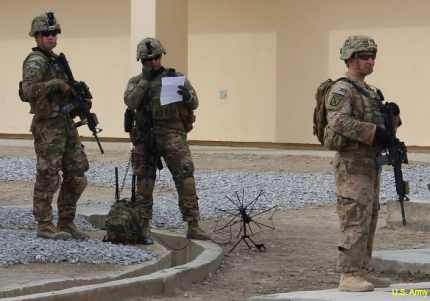Army to create a marketplace for Manpack Radios
The service wants multiple vendors to compete for orders for the two-channel radios under a potential 10-year contract.

Troops have used the initial Manpack Radios in training and while deployed in Afghanistan.
The Army is looking to create a “radio marketplace” for the full rate production of Manpack Radios, in which multiple vendors will compete for orders in the coming years.
The service has released a draft Request for Proposals for the two-channel, software-defined radios, saying it plans to award spots to multiple vendors under a contract that will have a five-year base period with a five-year option.
The Manpack Radios are considered to be an important tool for soldiers in the field given their versatile portability. They can fit into a backpack, enabling soldiers to use their Rifleman Radios and Nett Warrior smartphones, or be mounted onto vehicles. Last year, the Army took delivery of 5,326 Manpacks under a low-rate initial production contract with General Dynamics C4 Systems and Rockwell Collins.
As described in the Army’s draft RFP, the Manpack Radios will “enable communications through seamless, high speed and digital information exchange across both vertical and horizontal hierarchies within the battlespace that supports ground, airborne and maritime domains. The Manpack Radio will support all domains for dismounted and mounted communications as a multi-functional communications platform.”
The Army has been authorized to purchase up to 60,296 units through 2032. "We are relying on our industry partners to help us simplify the network and make systems such as the Manpack Radio easier to use and more intuitive for soldiers," Col. James P. Ross, Project Manager for Tactical Radios said in an Army release. "The radio marketplace gives all vendors the opportunity to participate, driving down costs and promoting continuous innovation."
The Army wants to ensure that interested vendors can meet certain proposed changes regarding mission weight, battery life, and range requirements.
Vendors, once awarded, will undergo testing to “determine if threshold requirements have been met,” the Army said. If they are not, they will be off-ramped. The next phase for awarded vendors that can pass the initial qualification test is an operational test.
The Army said it is using the draft RFP to gather information from industry, and is planning a pre-solicitation day for April 16. The service expects to make a contract award in fiscal 2016, with full-rate production beginning in Fiscal 2017.